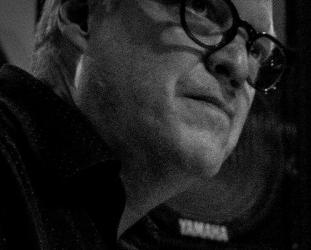Graham Reid | | 1 min read
To All It

In the late Sixties the most interesting and influential composer in New York – whose students and colleagues included Terry Riley, Philip Glass, Steve Reich and John Cale – was a guy called LaMonte Young.
And even today you'd be forgiven for not having heard of him.
He might have been the godfather of the avant-garde/minimalism movement but he was overtaken by his acolytes when it came to recording and becoming famous.
Young seems never to have been interested in the latter, but he also didn't record much early on.
There was something in the mid Sixties with John Cage, his wife Marian Zazeela, Tony Conrad and Angus McLisle (the latter two in the orbit of the early Velvet Underground) but that was a bootleg and has long since disappeared.
There was other releases in the late Sixties and early Seventies (again impossible to find) and it wasn't until the late Eighties with his five record set The Well Tuned Piano 81 x 25 on Gramavision – which many might claim as his masterpiece – that he was out there in the wider world.
It was a continuous, improvised concert recorded on re-tuned piano in '81 and its influence certainly outweighs its modest sales figures. Artists as diverse as Lou Reed (citing Young on the cover of Metal Machine Music), Brian Eno, Jon Hassell and many others have cited it as an influence.
At the time some likened it to Keith Jarrett without the grunts, groans and wrestling with the keyboard.
It would be no surprise if New York composer David Moore (who leads the ensemble Bing and Ruth) has a copy of The Well Tuned Piano weighing down his shelf, alongside plenty of Eno, Glass, Reich and Harold Budd.
This new album – recorded over two days in a church in Hudson, New York – has all the seductive hallmarks of classical-cum-ambient music for piano, clarinet, two acoustic bassists and someone using tape delay to create the broad atmospherics.
The 10 translucent pieces almost seem to segue together in the first half and it isn't until the more assertive and busy opening piano passages of Form Takes just after the centre do you feel pulled into a new direction. But then it quietly devolves back to slow stateliness, ambience and restful, minimalist repetition.
This is music of quietness, evolving and dissolving piano lines, mid-ground drones and electronic atmospheres, oceanic washes . . .
And the pieces come with Eno-like titles: As Much As Possible, The How Of It Sped, Is Drop, Flat Line/Peak Color and What Ash It Flew Up among them.
Very much music for films of the imagination. The colour-field cover photo is a clue to the contents.





post a comment